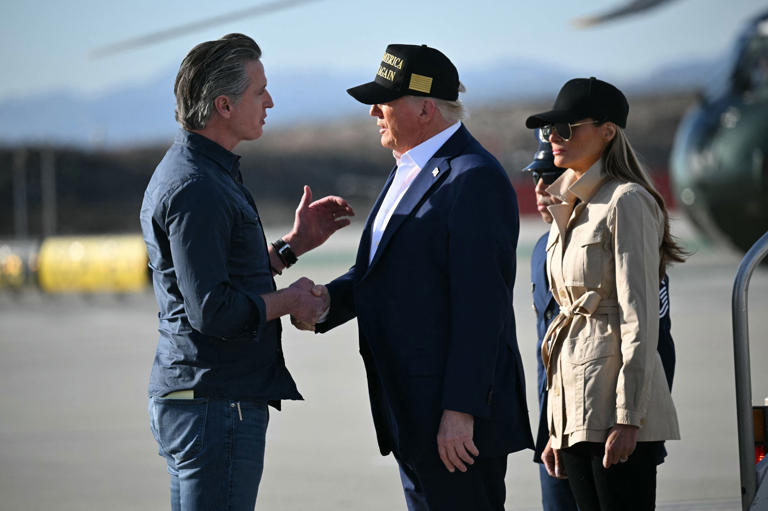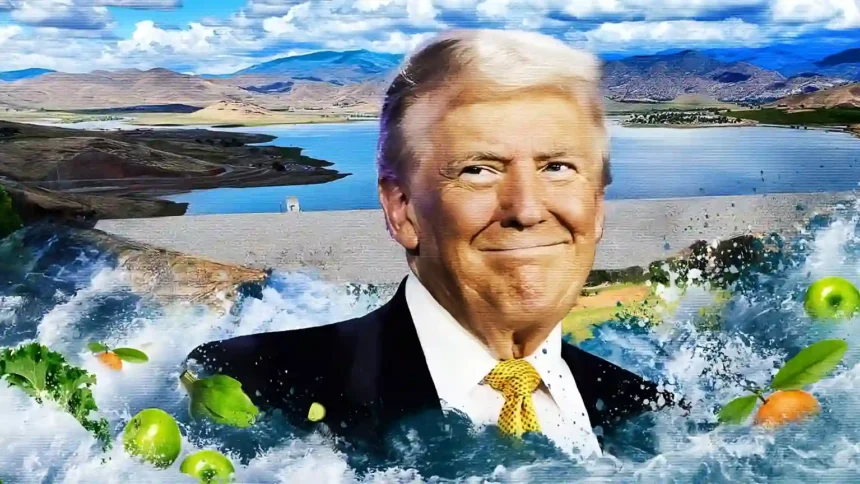A sudden decision from the Trump administration sent shockwaves through California’s farming community.
Farmers and water managers scrambled as billions of gallons of water were set for release, threatening to flood crops, homes, and livelihoods.
The rushed order left many asking: Was this a necessary move, or a political misstep with devastating consequences?
Unexpected Water Release Triggers Panic
Late Friday afternoon, the Army Corps of Engineers received a directive to open the floodgates at Kaweah and Success Lakes.
This massive water release aimed to send water downstream to Southern California, reportedly to aid wildfire relief.
However, to farmers in the San Joaquin Valley, the move made little sense.
Victor Hernandez, a regional water manager in Tulare County, got the shocking news only an hour before the release was set to begin.
“I’ve worked in water management for 25 years, and I’ve never seen anything this reckless,” Hernandez said. “We weren’t prepared, and neither was the land.”
With reservoirs brimming and the ground already saturated, the sudden release threatened to overwhelm canals, irrigation systems, and nearby farmlands.

Farmers Fight Back Against the Decision
The backlash came swiftly. Farmers and local officials condemned the move, arguing that the release was ill-timed and unnecessary.
Water wasn’t in short supply for crops, and there was no urgent demand for irrigation.
“This wasn’t a well-thought-out decision,” said Maria Gutierrez, a third-generation almond farmer. “We depend on a stable water supply, not sudden surges that could wipe out our fields.”
Elected officials also voiced their concerns. U.S. Senator Alex Padilla and Congressman Jim Costa called for an immediate review, warning that an uncontrolled release could endanger communities and create long-term water shortages.
“California’s water system isn’t a political toy,” Padilla stated. “Releasing water without a solid plan could turn a manageable situation into a full-blown disaster.”
A Race Against Time to Prevent Catastrophe
As the release time neared, water managers worked frantically to find a solution. Engineers rushed to divert water into alternative channels, while farmers scrambled to secure their fields.
“We were on the phone non-stop, trying to slow this down,” Hernandez said. “We couldn’t afford to let this turn into a flood event.”
Under mounting pressure, the Army Corps of Engineers agreed to slow the release, reducing the immediate risk. But for many, the damage was already done.

Did Politics Override Common Sense?
Critics argue that the order was less about managing resources and more about political optics.
The water was being sent over 200 miles away—far from the most immediate wildfire threats.
“This water could have been stored for irrigation in the coming months,” said a former Bureau of Reclamation official. “Instead, it was nearly wasted.”
The incident raises deeper questions about federal water policy. Who makes these decisions? And are they prioritizing the needs of farmers, or political agendas?
Final Thoughts
By Saturday, the Palisades and Eaton fires—the supposed reason for the water release—were fully contained. Meanwhile, California’s farmers were left to deal with the aftermath.
Now, they worry about the future. If one executive order can nearly upend an entire farming region, what’s stopping it from happening again?
As the dust settles, one thing is clear: the battle over California’s water is far from over.







